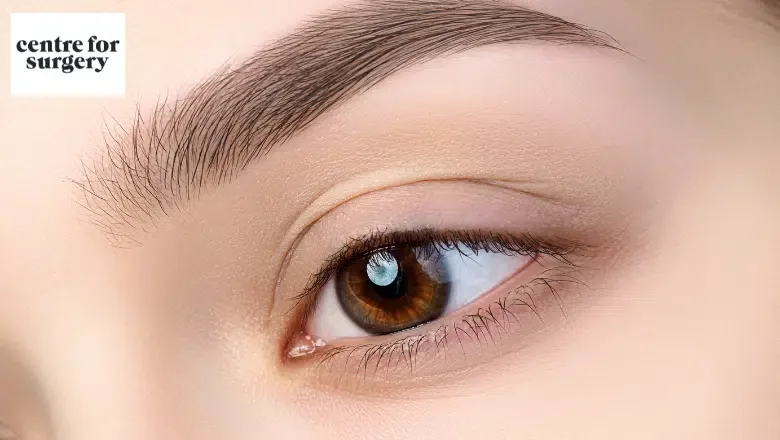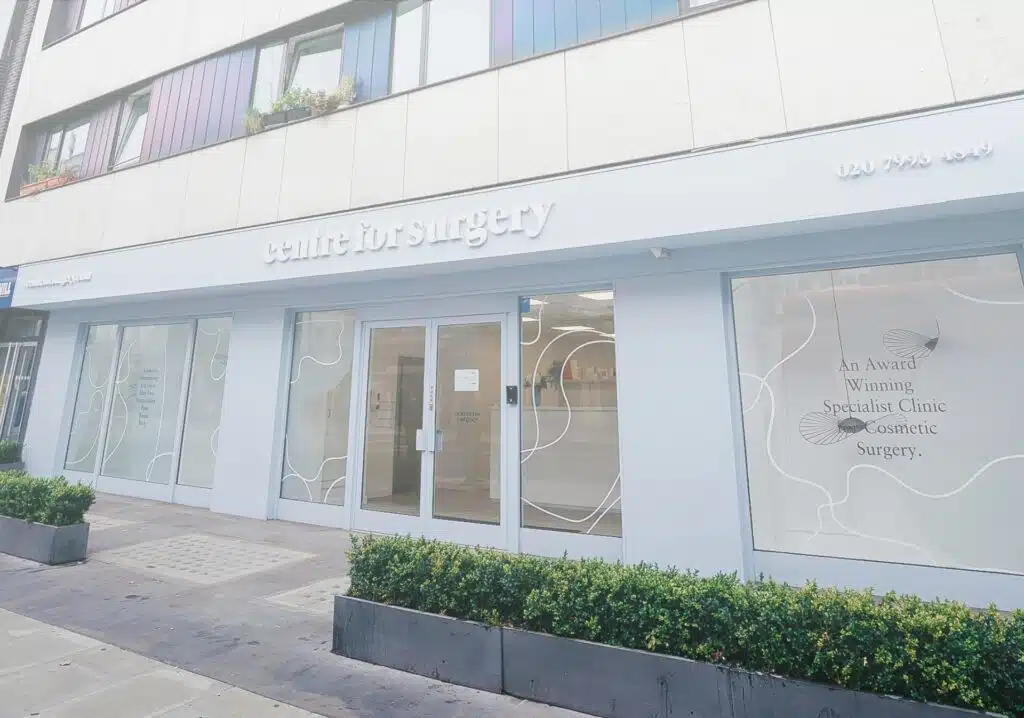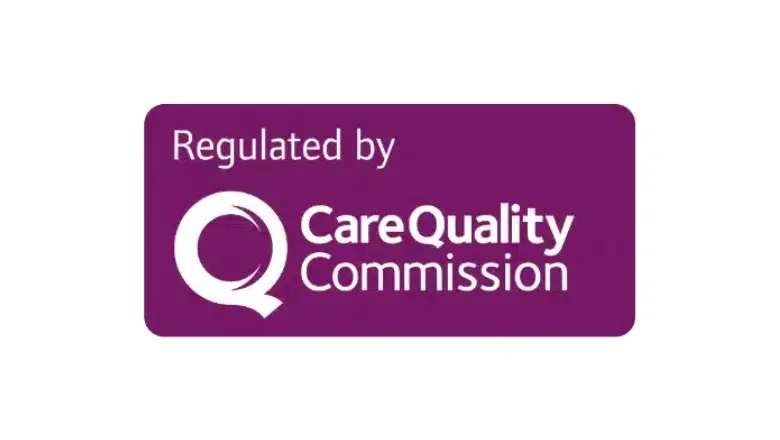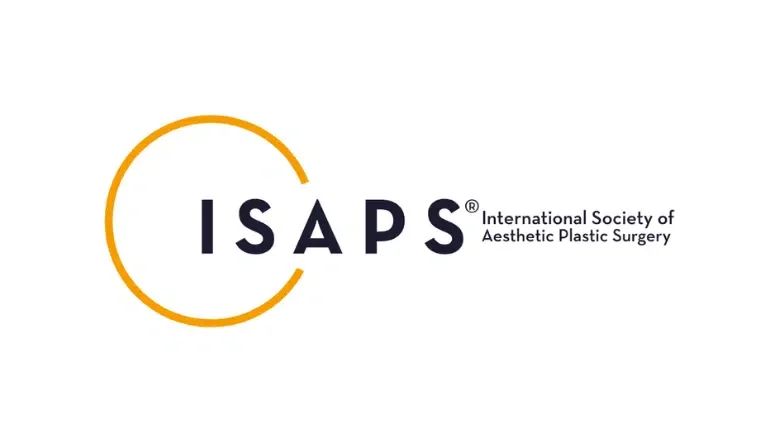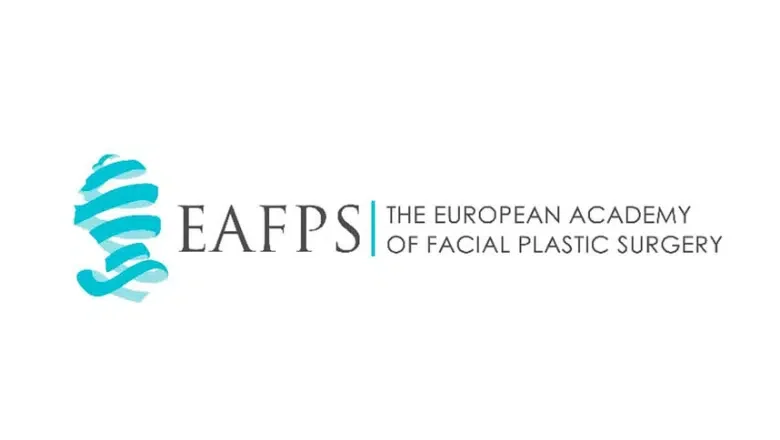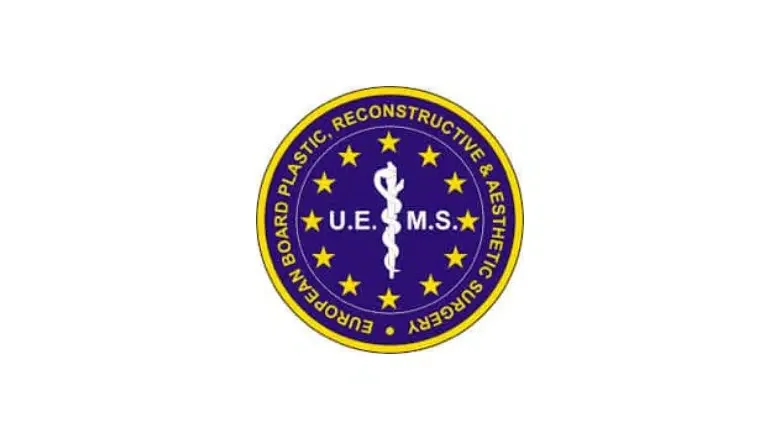What are Heavy Eyelids?
When we mention ‘heavy eyelids’, it’s not about feeling tired after a late night or enduring a lengthy meeting. It refers to a medical condition known as ptosis or dermatochalasis, where the upper eyelids droop. This sagging of the eyelids can make you look more tired than you really are, and in some cases, it might even affect your vision.
While growing older is a significant factor in developing heavy eyelids, it’s not the only one. Genetics can play a role – you might have inherited the trait from your parents. Lifestyle choices, too, can contribute. For instance, long-term stress or eye strain might cause your eyelids to sag over time.
Here at Centre for Surgery, we’re a leading plastic surgery clinic based in London. Our highly skilled surgeons are experienced in performing a range of facial plastic surgeries, including blepharoplasty. This procedure, also known as an eyelid lift, can effectively tackle heavy eyelids, giving you a more refreshed and youthful appearance. So, if you’re in the UK and thinking about a solution for your heavy eyelids, our expert team is here to help.
RELATED: Eyelid Ptosis – How Eyelid Surgery Can Help Droopy Eyes
Causes of Heavy Eyelids leading to needing Upper Eyelid Surgery (Blepharoplasty)
Heavy eyelids, also known as ptosis, can be caused by various factors, including age, genetics, medical conditions, and lifestyle habits. When heavy eyelids become severe, they can impair vision and make a person appear tired or older than they are. In some cases, upper eyelid surgery, also known as blepharoplasty, may be recommended to correct the condition. Here are some of the most common causes of heavy eyelids:
Age
As we age, our skin loses elasticity, and our muscles weaken, causing the skin on our eyelids to sag. This can cause the eyelids to become heavy and droopy, leading to impaired vision and an older, tired appearance.
Genetics
Some people are born with a genetic predisposition to ptosis. This can be caused by several factors, including weak eyelid muscles, a naturally low brow position, or excess skin on the eyelids.
Medical conditions
Certain medical conditions can cause heavy eyelids. For example, thyroid eye disease can cause inflammation and swelling of the tissues around the eyes, leading to a heavy, droopy appearance. Neurological conditions such as myasthenia gravis can also cause muscle weakness and ptosis.
Lifestyle habits
Certain lifestyle habits can contribute to heavy eyelids. For example, excessive alcohol consumption can cause dehydration and swelling, leading to a heavy appearance of the eyelids. Smoking can also cause skin damage and premature ageing, leading to sagging eyelids.
Injury
Trauma to the eye or eyelid can cause damage to the muscles or tissues that support the eyelids, leading to a heavy, droopy appearance.
RELATED: Eyelid Surgery FAQs – Q&A about Blepharoplasty
Early Signs of Heavy Eyelids
One of the key initial signs of droopy eyelids, also known as heavy eyelids, is a continuous sensation of tiredness or stress in your eyes. This feeling persists even if you’ve had a good rest or a full night’s sleep. Your eyelids might feel like they’re dragging down, as if something heavy is pulling on them. By the end of the day, it might become increasingly challenging to keep your eyes open, which can be a frustrating experience.
Another telltale sign of droopy eyelids is the constant appearance of exhaustion or lack of interest on your face. This is because your eyes may not seem as wide open as they used to be. Comparing your recent photos with those taken a few years ago can make this change even more obvious.
Moreover, you might also find yourself constantly lifting your eyebrows in an effort to raise your eyelids or alleviate the feeling of heaviness. This unconscious action could result in wrinkles forming on your forehead. This is another indication that your eyelids are heavier than before.
In certain instances, the sagging of the eyelids can start affecting your sight, particularly the edges of your visual field, known as peripheral vision. You might discover that you need to tilt your head backward to see things more clearly. Tasks that necessitate a wide visual field, such as driving, could become challenging.
Droopy eyelids could also lead to physical discomfort. This might include eye irritation or an aching sensation around the eyes. Some individuals might experience an increase in tear production or discomfort when wearing contact lenses. It’s important to recognise these signs and consult a medical professional or an eye specialist to address the issue promptly.
Prevention of Heavy Eyelids
While some of the primary factors leading to heavy eyelids, like ageing and genetics, are out of our control, that doesn’t mean there aren’t steps we can take to delay or even prevent the onset of this condition. Here are a few proactive tips that can help you fend off those sagging lids:
Quit Smoking
Smoking not only harms your health in general, but it can also speed up the ageing process of your skin. The harmful free radicals found in tobacco can lead to premature skin ageing, so quitting smoking can be hugely beneficial in the fight against sagging eyelids.
Prioritise Quality Sleep
Sleeping well is integral to keeping your skin healthy, including the skin on your eyelids. Lack of sleep can lead to swollen or drooping eyelids, so aim to get a solid 7-8 hours of sleep every night.
Follow a Balanced Diet
A diet full of fruits, vegetables, lean proteins, and healthy fats can help keep your skin looking its best. Nourishing your skin from the inside is just as important as any external skincare routine.
Protect Your Eyes from the Sun
The skin around your eyes is incredibly delicate and particularly vulnerable to damage from the sun’s rays. Regular use of sunglasses and sunblock can protect this sensitive area, helping to ward off signs of ageing such as wrinkles and drooping eyelids.
Reduce Screen Time
Spending too much time staring at digital screens can strain and fatigue your eyes, which can contribute to the development of heavy eyelids. Take regular breaks away from screens, and consider using blue light filters if your job involves prolonged screen use.
Why are the eyelids the first to show signs of ageing?
The eyelids are often the first area of the face to show signs of ageing because the skin in this area is particularly thin and delicate. In addition, the eyelids are constantly in motion, as we blink and squint throughout the day. This movement can cause wear and tear on the skin and muscles around the eyes over time.
As we age, the skin on the eyelids begins to lose its elasticity, collagen and hyaluronic acid, causing it to become loose and saggy. This can lead to the formation of excess skin, wrinkles, and fine lines on the eyelids. In addition, the muscles that support the eyelids may weaken, leading to a droopy, tired appearance.
RELATED: How to Fix Droopy Eyelids
The fat pads normally present in the eyelids can also shift or become more prominent with age, leading to under-eye bags or puffiness. This can make a person look older, tired, or even sad.
Other factors that can contribute to premature ageing of the eyelids include sun damage, smoking, stress, and poor lifestyle habits. All of these factors can lead to collagen breakdown, skin thinning and loss of elasticity, making the signs of ageing more noticeable.
Considering upper eyelid surgery or lower eyelid surgery?
Upper eyelid surgery is commonly performed to remove excess skin and fat from the upper eyelids, which can cause the eyelids to droop, and may impair vision. This procedure can create a more youthful and alert appearance and improve the field of vision.
Lower eyelid surgery, on the other hand, is performed to reduce under-eye bags, dark circles, and puffiness. This is achieved by removing or repositioning fat deposits under the eyes, tightening the skin, or combining both. The procedure can create a more refreshed and rejuvenated appearance.
In some cases, both upper and lower eyelid surgery may be recommended to achieve the desired results. For example, if a person has both sagging upper eyelids and under-eye bags, a combination of the two procedures may be appropriate.
RELATED: What are the benefits of eyelid surgery?
Blepharoplasty surgery is becoming more popular in the UK
Blepharoplasty surgery, a surgical procedure to correct sagging or drooping eyelids, is becoming more popular in the UK. According to the British Association of Aesthetic Plastic Surgeons (BAAPS), blepharoplasty was one of the top five most commonly performed cosmetic surgery procedures in the UK in 2020, with over 4,000 procedures performed.
There are several reasons why blepharoplasty is becoming more popular in the UK. One reason is that people live longer and want to maintain a youthful appearance as they age. Blepharoplasty can help to address the signs of ageing around the eyes, including sagging skin, wrinkles, and puffiness, and can create a more youthful and refreshed appearance.
In addition, advances in surgical techniques and technology have made blepharoplasty at Centre for Surgery a safe and effective procedure with minimal downtime. Patients can typically return to their normal activities within a week or two after surgery, and the results can last for many years.
Ptotic eyelids – When does eyelid skin start to become saggy, crepey or droopy?
The age at which facial and eyelid skin start to become crepey, sag, or droop can vary from person to person and depend on various factors, including genetics, lifestyle habits, and exposure to the sun and other environmental factors.
In general, however, the skin around the eyes and on the face begins to lose elasticity and collagen in the late 20s or early 30s. This natural ageing process can cause the skin to appear less firm and less plump, making it more susceptible to sagging and drooping.
As we continue to age, typically after the age of 40, the loss of elasticity and collagen becomes more noticeable and may lead to wrinkles, fine lines, and other signs of ageing, including ptotic eyelids. Ptotic eyelids, also known as droopy eyelids or blepharoptosis, occur when the muscles and tissues that support the upper eyelids become weakened, causing the eyelids to sag and potentially impair vision.
RELATED: Eyelid Surgery In Your 30s, 40s, 50s And 60s
While ageing is the most common cause of ptotic eyelids, it can also be caused by medical conditions such as thyroid eye disease, nerve damage, and eye infections, as well as by certain medications and lifestyle factors such as smoking, alcohol consumption, and sun damage.
Treatment Options for Heavy Eyelids
Non-Surgical Options
There are several non-surgical options for treating droopy eyelids that can provide significant results without the recovery time associated with surgery.
Muscle Relaxing Injections
Anti-wrinkle injections are a popular non-surgical treatment for various cosmetic issues, including droopy eyelids. They use muscle-relaxing injections, which work by blocking the nerve signals in the muscles where they’re injected. When administered into specific muscles around the eyes, these injections can help to relax these muscles, subtly lifting the eyebrows.
This treatment can result in quite natural-looking outcomes, leaving you with a revitalised and more alert appearance. However, the effects typically only last between three to six months, so to maintain the results, you’ll need repeated treatments.
Dermal Fillers
Another non-surgical treatment to consider is the use of facial fillers. These are composed of hyaluronic acid and can be used to add volume and provide support to the brow and upper eyelid area. By filling out this area, the heaviness of the droopy eyelids can be offset, resulting in an uplift of the upper eyelid and reducing the sagging appearance.
Like muscle-relaxing injections, dermal fillers’ effects are temporary, and you’ll need regular top-up treatments to maintain the results. Depending on the specific type of filler used and individual response, the impact of dermal fillers can last anywhere from six months to two years.
While both of these treatments offer a noninvasive approach to treating droopy eyelids, they cannot replace the need for surgery in cases where there is a significant degree of droopiness or if the condition is affecting vision.
Surgical Approaches
Surgical options may be considered if non-surgical treatments don’t bring about the desired improvements, or if the heavy eyelids significantly impair your sight or affect your lifestyle.
Blepharoplasty
Blepharoplasty is often the preferred surgical method for definitively addressing heavy eyelids. This procedure, commonly known as an “eyelid lift,” aims to rejuvenate your eyes by tackling the issues that lead to heavy eyelids.
Blepharoplasty can be performed on the upper, lower, or both eyelids, depending on the patient’s needs. The focus is primarily on the upper eyelids when dealing with heavy eyelids.
During an upper eyelid blepharoplasty, the plastic surgeon creates an incision along the natural crease line of the eyelid. This strategic location ensures that any resultant scar is hidden and unnoticeable when the eyes are open. Through this incision, the plastic surgeon removes or repositions the excess skin, muscle, and fat causing the heaviness and droopiness. The incision is then sewn up, leaving the eyelids looking more open and revitalised.
The operation can be conducted under local or general anaesthesia, dependent on the patient’s health and preferences, as well as the complexity of the procedure.
Recovery from a blepharoplasty takes a few weeks. There might be initial bruising and swelling, but these symptoms typically lessen over time.
Blepharoplasty’s outcomes are durable. Although the procedure doesn’t halt the ageing process, it effectively rolls back the years, and the eyelids should maintain a more open and rejuvenated appearance for many years to come.
Ptosis repair
Ptosis repair and blepharoplasty are two different procedures aimed at improving the appearance of the eyelids, but they address different aspects of the problem. While blepharoplasty removes excessive skin, muscle, and fat from the eyelids, ptosis repair targets the weakened levator muscle, which is often the cause of droopy eyelids.
Known medically as ptosis, droopy eyelids are usually caused by a weakened or malfunctioning levator muscle. The levator muscle is the main muscle responsible for lifting the upper eyelid. If this muscle isn’t working properly, it can cause the upper eyelid to sag or droop, which is where ptosis repair comes into play.
This surgical procedure is designed to either strengthen the levator muscle or to reattach it, effectively pulling up the sagging eyelid and restoring a more normal appearance to your eyes. To carry out this procedure, your plastic surgeon will make a small cut in the natural crease of your eyelid. Through this cut, they’ll then either tighten the levator muscle or reattach it, depending on the severity of your ptosis and how strong your levator muscle is.
Ptosis repair is usually done under local anaesthesia, although general anaesthesia can be used if necessary. It’s often an outpatient procedure, which means you can go home on the same day that you have the surgery.
Recovery time from ptosis repair is typically quite short, and most people can get back to their regular routine within one or two weeks. You may experience some swelling, bruising or discomfort immediately after the procedure, but these symptoms should go away over time.
The results of a ptosis repair can last a long time and can even be permanent in some cases. It effectively fixes the problem of a droopy eyelid, and can greatly improve the overall appearance of your eyes.
Is Eyelid Surgery only for people over fifty years of age?
In fact, younger people may be good candidates for eyelid surgery if they have certain medical conditions, such as ptosis, or if they have excess skin or fat deposits around the eyes that are causing functional or cosmetic concerns. Eyelid surgery can be performed on both the upper and lower eyelids and may involve removing or repositioning fat and/or skin and tightening the underlying muscles.
Eyelid Surgery Requires an Experienced Surgeon
Eyelid surgery, also known as blepharoplasty, requires an experienced surgeon on the GMC specialist register with extensive training and expertise in facial plastic surgery. The eyes are a complex and delicate part of the face, and surgery in this area requires a high degree of precision and attention to detail.
RELATED: What does eyelid surgery involve?
An experienced surgeon will have the knowledge and skill to assess your individual needs and goals and recommend the most appropriate treatment options to achieve the best possible results. They will also be able to perform the procedure using the latest techniques and technologies while ensuring your safety and minimising the risk of complications.
When choosing a surgeon for eyelid surgery, it is essential to do your research and to select someone highly qualified and experienced. Look for a surgeon with a good reputation, positive reviews, and a portfolio of before-and-after photos of their previous work.
During your consultation, ask your surgeon about their training and experience in eyelid surgery and any certifications or memberships in professional organisations. They should also be able to explain the risks, benefits, and expected outcomes of the procedure, and answer any questions you may have.
Remember, the decision to undergo eyelid surgery is personal and should be made after carefully considering all the options and risks. With the help of an experienced and qualified surgeon, you can achieve the best possible results and enjoy a more youthful and refreshed appearance.
Scars after Surgery on Your Eyelids
Like any surgical procedure, eyelid surgery or blepharoplasty can leave scars. However, with proper care and attention, the scars can be minimized and become less noticeable over time.
The extent of scarring after eyelid surgery can depend on several factors, including the surgical technique used, the patient’s skin type, and the patient’s individual healing process. While scars may be visible immediately after surgery, they will typically fade and become less noticeable as the skin continues to heal.
Following your surgeon’s postoperative instructions is important to help minimise scarring after eyelid surgery. This may include avoiding sun exposure, keeping the area clean and moisturised, and avoiding strenuous activities or heavy lifting after surgery.
RELATED: What do blepharoplasty scars look like?
Your surgeon may also recommend the use of scar-reducing creams or silicone sheets to help promote healing and reduce the appearance of scars. In some cases, laser treatments or other non-surgical procedures may also be recommended to help improve the appearance of scars.
It is important to note that while most patients will experience some scarring after eyelid surgery, the scars are typically small and well-hidden in the natural creases of the eyelid. With proper care and attention, the scars can be minimised and become less noticeable over time.
FAQs about Heavy Eyelids
What leads to heavy eyelids?
Several factors can lead to the development of heavy eyelids. Ageing is a key contributor, as the loss of elasticity in the skin and the decline in muscle tone can cause the eyelids to droop. Other factors could include genetics, lifestyle habits such as smoking or excessive alcohol use, sun damage, and certain medical conditions like hypothyroidism.
What happens during a blepharoplasty procedure?
Blepharoplasty, or eyelid surgery, involves removing excess skin, muscle, and in some cases fat, from the eyelids to help reduce their heaviness. The operation can be carried out under local or general anaesthesia. During the procedure, the plastic surgeon will make a cut along the natural fold of your eyelid, which helps to ensure any scarring is less visible.
What can I expect during recovery from eyelid surgery?
Recovery from eyelid surgery, like blepharoplasty or ptosis repair, generally takes a few weeks. Initially, you may experience some swelling, bruising, and discomfort. These symptoms should lessen over time as your body heals.
Are there non-surgical methods to treat heavy eyelids?
Yes, there are several non-surgical approaches to address heavy eyelids. These can range from lifestyle changes, such as getting better sleep, eating a healthier diet, and reducing time spent looking at screens, to specific exercises that can strengthen the muscles around your eyelids. Non-surgical cosmetic procedures like muscle relaxant injections and dermal fillers can also help reduce the appearance of heavy eyelids.
Why Choose Centre for Surgery?
Choosing Centre for Surgery means committing to your health, well-being, and appearance. Our clinic, based in London, is home to a team of highly skilled and experienced plastic surgeons who specialise in a range of procedures, including those designed to address heavy and hooded eyelids.
Expertise
Our surgeons possess a wealth of knowledge in cosmetic and plastic surgery and bring a high degree of proficiency and precision to each procedure.
Patient-centred care
We believe in an approach that puts you, the patient, at the centre of everything we do. From your initial consultation through to post-operative care, our team is committed to providing you with the highest quality of service, tailored to your specific needs and preferences.
State-of-the-art facilities
Our clinic is equipped with the latest medical technology and follows stringent safety standards, ensuring that you receive the best care in a safe and comfortable environment.
Comprehensive Consultation
We take the time to fully understand your needs and expectations, providing you with detailed information about the available options and helping you make an informed decision.
Exceptional postoperative care
We recognise the importance of post-operative care. Our dedicated team will continue to monitor your recovery and provide the necessary support to ensure optimal results.
Proven track record
Over the years, we have helped numerous patients enhance their appearance and confidence.
Choose Centre for Surgery for a professional and supportive approach to cosmetic surgery that prioritises your needs and well-being above all else.
